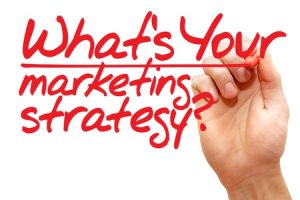Last week we talked about the major difference between ads and marketing. One says “spend” the other says “Welcome”. There is a method of removing the “give me your money” threat from an ad and dramatically increasing your response. The two concepts, advertising and marketing, can be used together in a “campaign”. This can soften the blatant “spend money” perception that ads usually evoke. It involves a three-step method. The first step offers a non-threatening gift or opportunity. The gift or opportunity then motivates the prospect to take action. If that action is taken, a benefit is offered.
As soon as your ad is identified as an ad, your readers will perceive it as they do all others. It gets lost in a sea of similar creatures all vying for attention. If you want your ad to stand out, don’t make it look like an ad. Ads have offers, illustrations, photos, coupons and various sizes of varying shapes of typeset letters. You don’t need any of that in your campaign ad. You simply need a vehicle to provide information and a catchy attention grabber to make certain that information is read.
When you are buying print advertising you are buying the space, and with few limitations, that space is yours to design. For the greatest readership and the strongest interest, make your ad look like an editorial piece. Preferably resembling a “Warning” or an “Urgent Message”. To qualify readers or further attract your specialty readers, stick the word “Fitness” somewhere in with that warning. Rather than presenting features and benefits of your club or service, point out, in editorial format, some of the challenges and difficulties the state of the industry presents consumers with.

Every ad, in order to be successful, must contain a “call to action”. A specific instruction telling the reader what to do next. An example of a call to action is simply to phone for a free information booklet. That’s it. There’s nothing threatening, there’s nothing intimidating and the disguised ad promises to help the consumer make a wise choice. This presents a message of “save money” rather than “spend.”
The second step becomes the actual selling piece. The information booklet might be a 12-page piece you compile about some of the challenges, problems and difficulties people face in trying to make wise fitness choices. As the copy continues, it begins to point out how you or your facility can eliminate these problems and meet the common needs. Present the prospect with a problem and offer the solution through your services.
Instead of having to motivate your prospect to take action with only a fraction of a page in a newspaper or magazine, you now have each prospect’s undivided attention. These pages are meant to motivate them to visit your facility or try out your services. The third step can include a special deal for those prospects that take immediate action.
Just as a refresher, the steps in a well-planned campaign should include:
- An “editorial” advertisement
- Valuable information (a problem the prospect has, you offer the solution) accompanying the selling piece
- A special benefit for those who take immediate advantage of your offer
Ryan Farrell started working with the National Federation of Professional Trainers (NFPT) in 2012. As NFPT's Marketing Coordinator, Ryan is responsible for aiding company reputation by building brand awareness and establishing strong working relationships among NFPT, its affiliates and industry partners.

